2017 370z Top Speed
The 2017 Nissan 370Z Nismo is a Rear-wheel drive Coupe. It can accommodate up to 2 passengers. It has 2 Doors and is powered by a 3.7L V6 DOHC 24-valve engine which outputs 350 hp @ 7400 rpm and is paired with 6-speed manual transmission gearbox. The 2017 Nissan 370Z Nismo has cargo capacity of 195 Liters and the vehicle weighs 1547 kg. In terms of ride assists, the 2017 Nissan 370Z Nismo has stability control and traction control in addition to anti-lock brake system (ABS). The vehicle has an optional engine as well It offers and Rearview monitor. Safety features also include Dual-stage supplemental driver side front airbag and Dual-stage supplemental passenger side front airbag. The front suspension is Front independent suspension while the rear suspension is Rear independent suspension. The car also features a Yes It has 19-inch NISMO forged alloy wheels by RAYS as standard. Electronic features include Cruise Control. For convenience, the car has Power windows and Power door locks. There is also a remote keyless entry feature. Moreover, the car has. The steering wheel has audio control buttons. In terms of performance, the car has 382 N.m of torque and a top speed of 259 km/h. The 2017 Nissan 370Z Nismo accelerates from zero to 60 mph in 5 seconds and hits quarter mile at 12.9 seconds. Fuel consumption is 12.6 L/100km in the city and 9.3 L/100km in the highway. The car price starts at $ 48,098
➤ 2017 NISSAN 370Z Coupé 3.7 V6 (331 HP) 0-100 km/h 0-200 km/h 0-230 km/h Acceleration & Pure Sound
➤ 2017 NISSAN 370Z Coupé 3.7 V6 (331 HP) 0-100 km/h 0-200 km/h 0-230 km/h Acceleration & Pure Sound
2017 Nissan 370Z Used Price Estimates
Estimates based on a driving average of 12,000 miles per year
| Used Condition | Trade In Price | Private Party Price | Dealer Retail Price |
|---|---|---|---|
| Outstanding | $ 21,112 | $ 23,216 | $ 25,442 |
| Clean | $ 20,603 | $ 22,640 | $ 24,785 |
| Average | $ 19,585 | $ 21,489 | $ 23,471 |
| Rough | $ 18,567 | $ 20,337 | $ 22,157 |
In the end, the 2017 Nissan 370Z isn't the most real-world-livable choice but is compelling enough to take one for a test-drive. It's up to you to decide which set of attributes you value most.
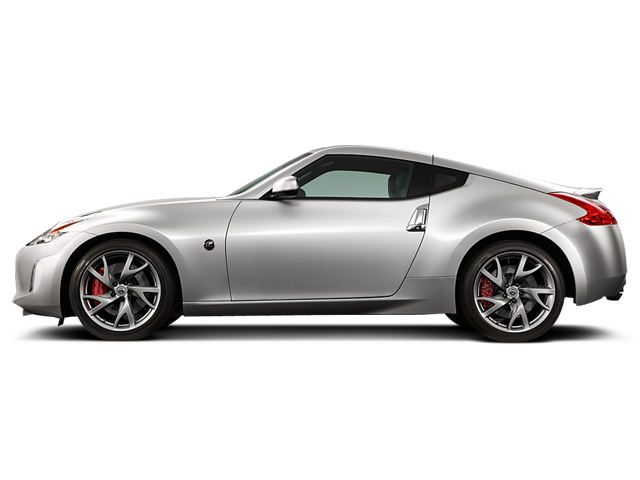
Every 2017 Nissan 370Z comes standard with antilock brakes, traction and stability control and side airbags. The coupe gets side curtain airbags, while the Roadster's side airbags extend upward for head protection. A rearview camera is standard for the coupe's Touring, Sport Tech and Nismo Tech trims and the 370Z Roadster's Touring and Sport Touring trims. Features like adaptive cruise control and blind-spot monitoring are not available.
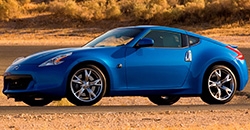
In brake testing, a coupe with the available upgraded brakes and 19-inch summer performance tires stopped from 60 mph in a short 106 feet, while a Roadster with the Sport package matched that impressive feat. However, the most recent 370Z Nismo we tested weighed about 100 pounds more than the standard Z and it posted a longer (but still respectable) stopping distance of 111 feet.
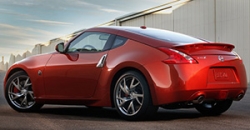
The 2017 Nissan 370Z is a two-seater sports car that is available as a hatchback coupe or soft-top convertible (Roadster). The coupe comes in base, Sport, Touring, Sport Tech, Nismo and Nismo Tech trim levels. The Roadster comes in base, Touring and Touring Sport trims.

The base-model 370Z coupe and Roadster come standard with 18-inch wheels and summer performance tires, automatic bi-xenon headlights, LED running lights and taillights, keyless ignition and entry, cruise control, automatic climate control, a leather-wrapped tilt-only steering wheel, Bluetooth phone connectivity and a four-speaker sound system with a CD player and an auxiliary audio jack.
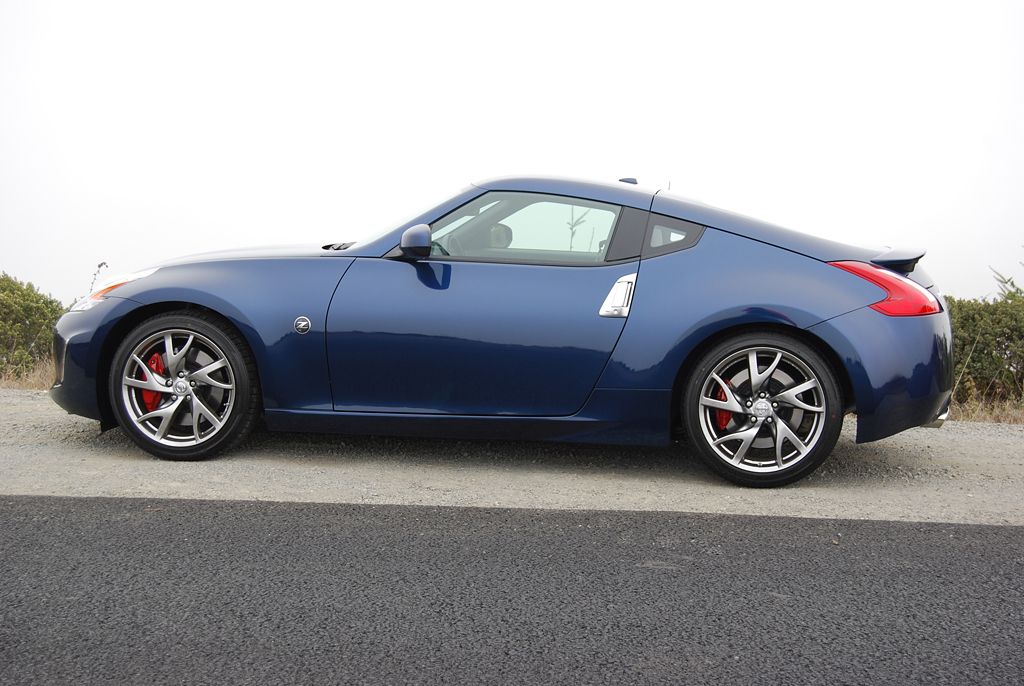
Upgrade to the Sport trim (only available on the coupe) and you'll get a limited-slip differential, upgraded brakes, lightweight 19-inch alloy wheels, heated mirrors, chin and rear deck spoilers and an eight-speaker Bose audio system with Active Noise Control and Active Sound Enhancer technology.
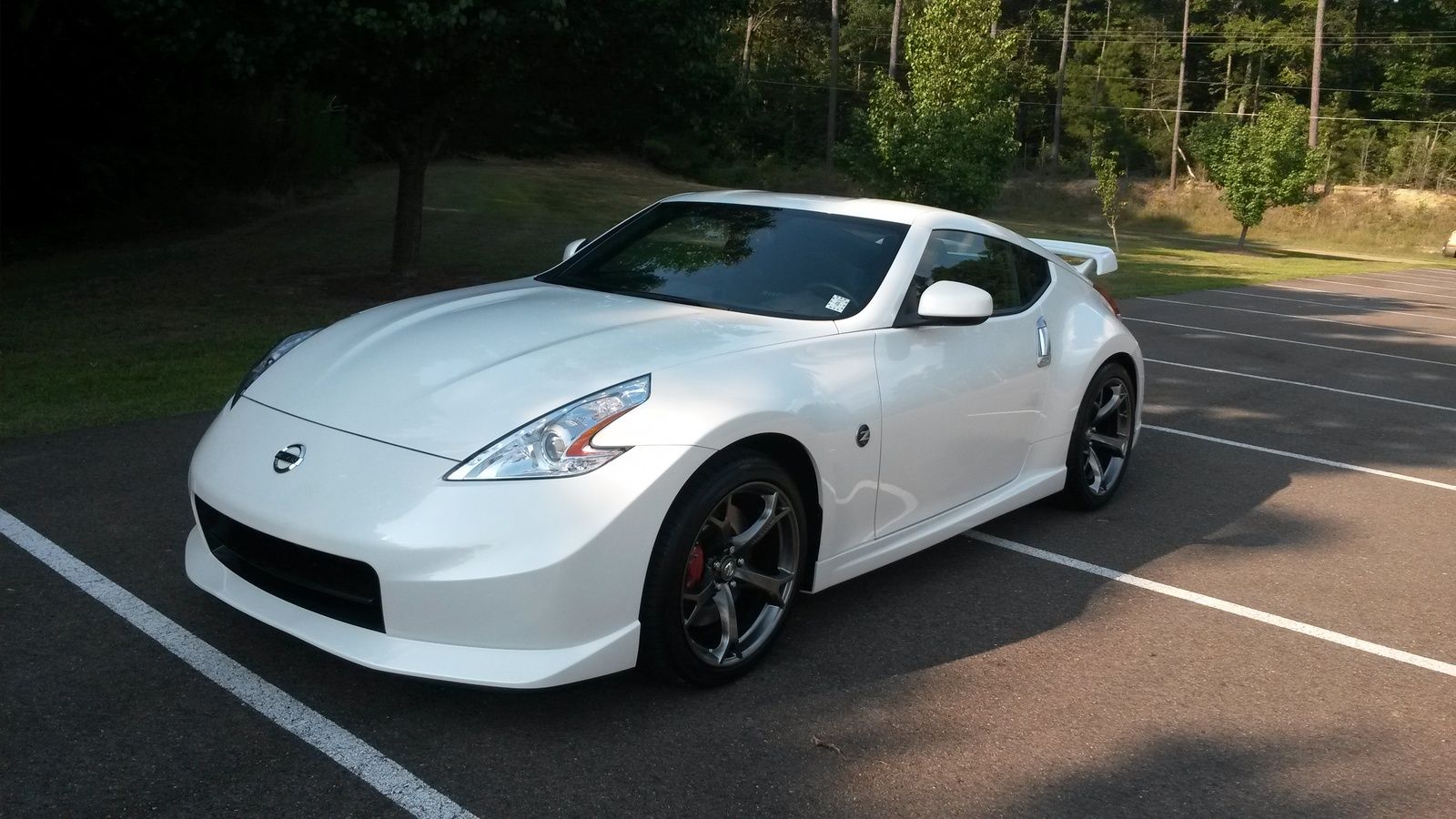
The Touring trim loses the Sport's performance upgrades but adds creature comforts like leather/simulated-suede upholstery and suede door trim panels, a rear cargo cover (coupe only), heated seats with four-way power seats (with adjustable driver lumbar), ventilated/heated leather seats (roadster only), aluminum pedals, an auto-dimming rearview mirror, a 7-inch touchscreen infotainment system with navigation, USB connectivity, voice controls, a rearview camera, Bluetooth audio connectivity and satellite radio.
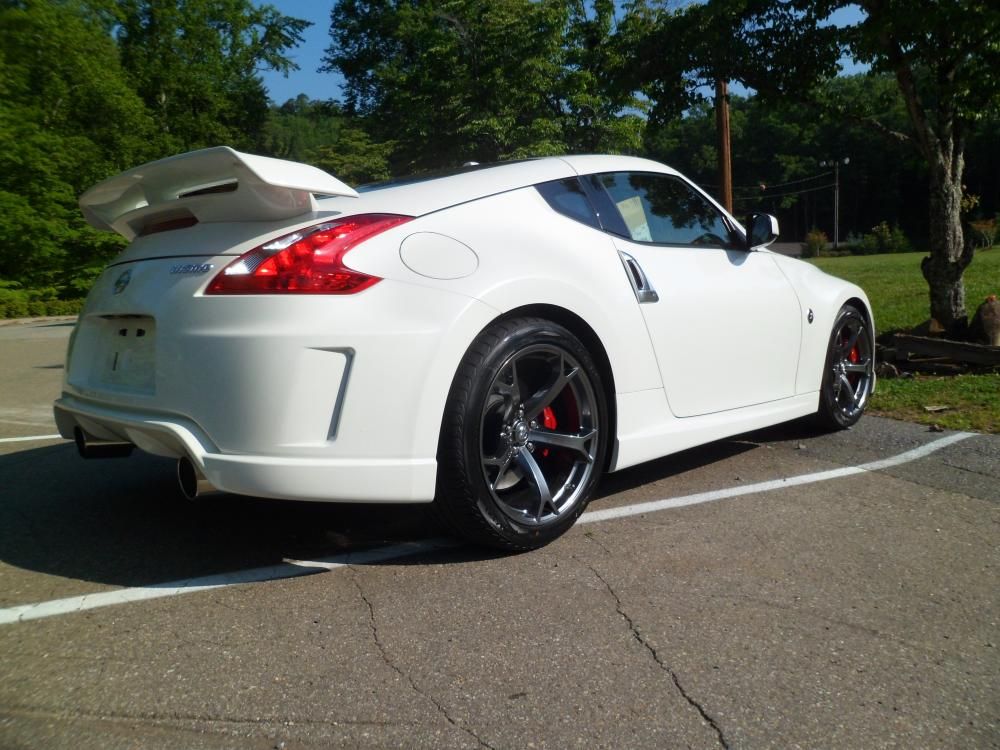
The Sport Tech coupe gets most of the equipment from the Sport and Touring models minus the heated power seats, upgraded upholstery, aluminum pedals or cargo cover. The Touring Sport Roadster mirrors the Sport Tech's equipment, but it is missing the front-chin and rear-deck spoilers. It does get the seats/upholstery/pedals and cargo cover though.
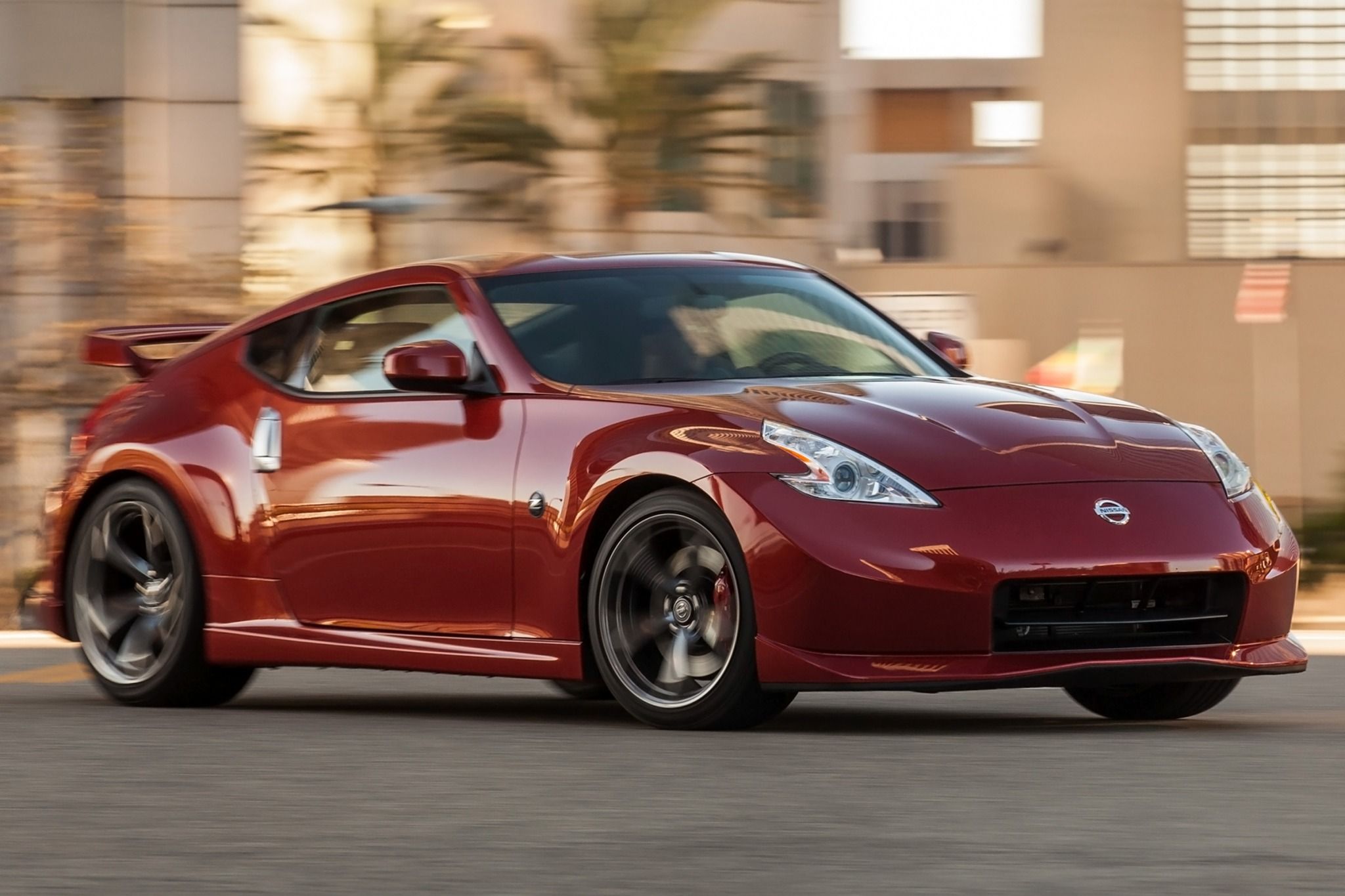
The 370Z Nismo gets a more powerful version of the standard V6 and features the same or upgraded versions of the Sport trim's performance hardware, including an exclusive sport-tuned suspension, upgraded tires and special brake fluid and hoses. The Nismo also features unique aerodynamic body pieces, leather/simulated-suede manual Recaro sport seats (eight-way driver, four-way passenger) and a suede-trimmed steering wheel. The Nismo Tech trim level adds the Touring's auto-dimming rearview mirror and its various upgraded electronics features, including the 7-inch touchscreen interface and the navigation system.
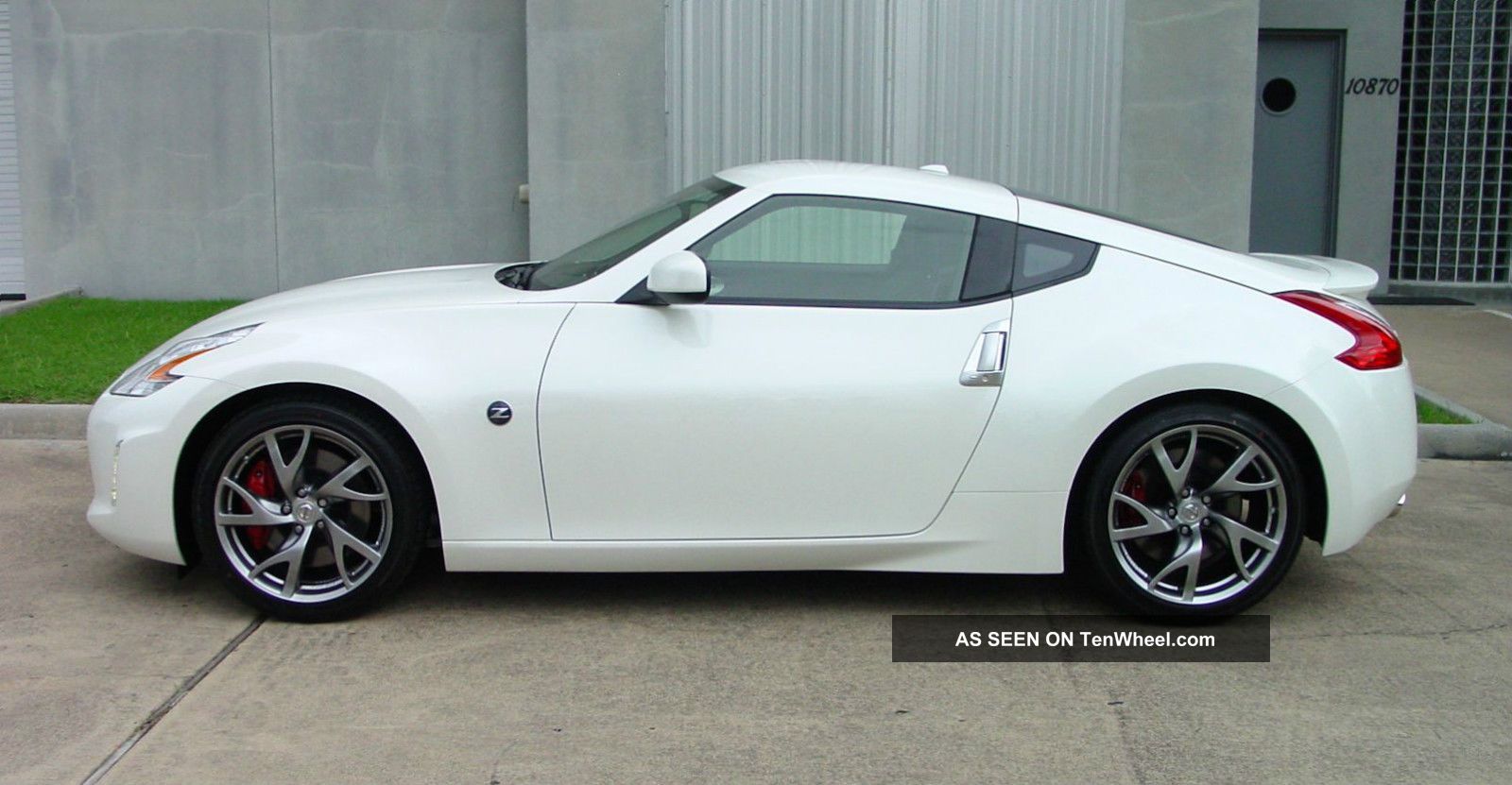
All versions of the 2017 Nissan 370Z are powered by a 3.7-liter V6 engine. In the non-Nismo models, the V6 produces 332 horsepower and 270 pound-feet of torque. A six-speed manual transmission is standard for all coupes and Touring and Touring Sport roadsters. On Sport and Sport Tech coupes and Touring Sport roadsters, the manual gearbox includes SynchroRev Match, a driver-selectable mode that automatically blips the throttle during downshifts to deliver smooth gear changes.
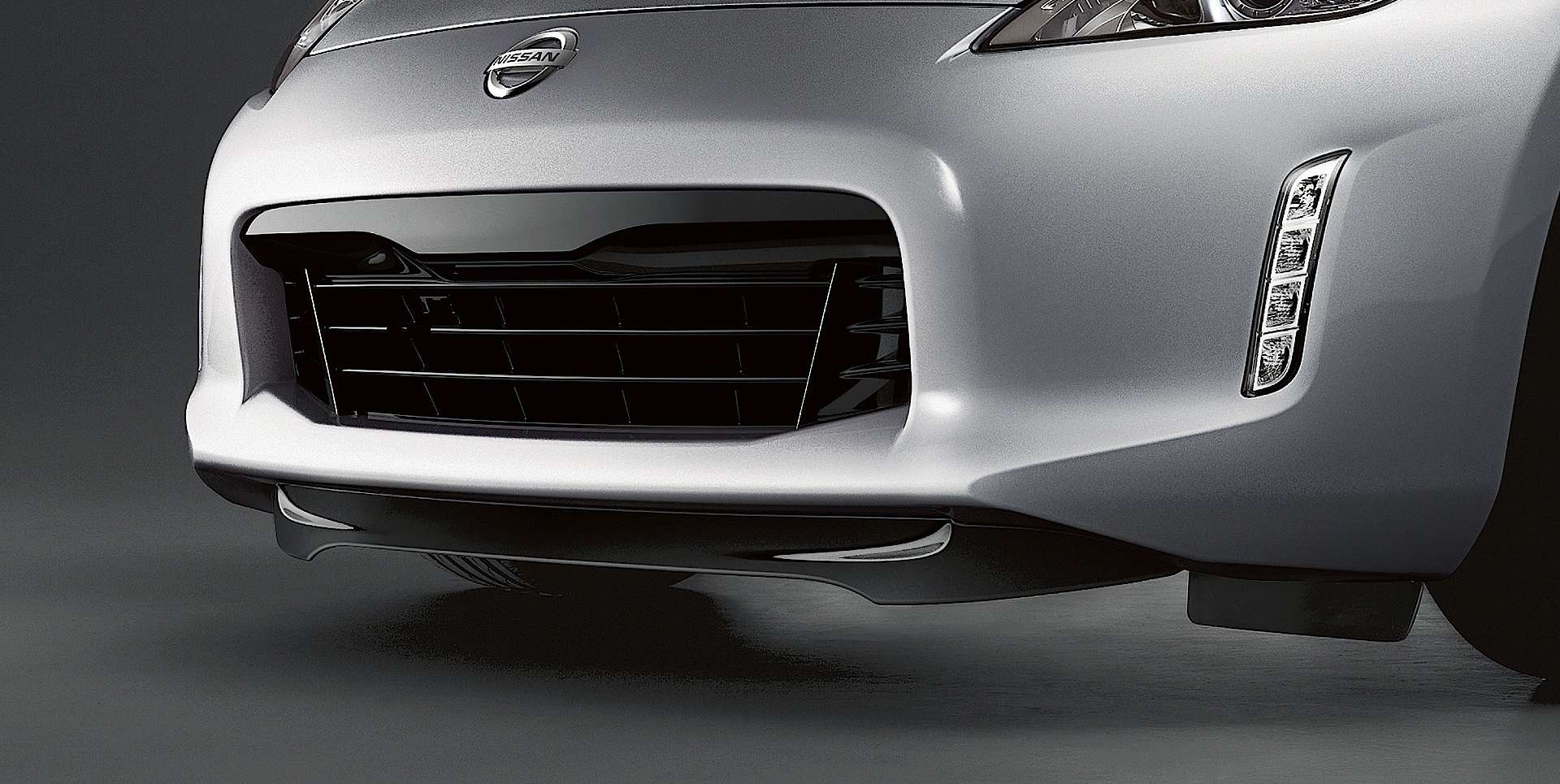
A seven-speed automatic transmission with manual-shift capability and downshift rev-matching is optional for all 370Z coupes and standard on the base 370Z Roadster. Steering-wheel-mounted shift paddles are included on all automatic-equipped models except the base coupe.
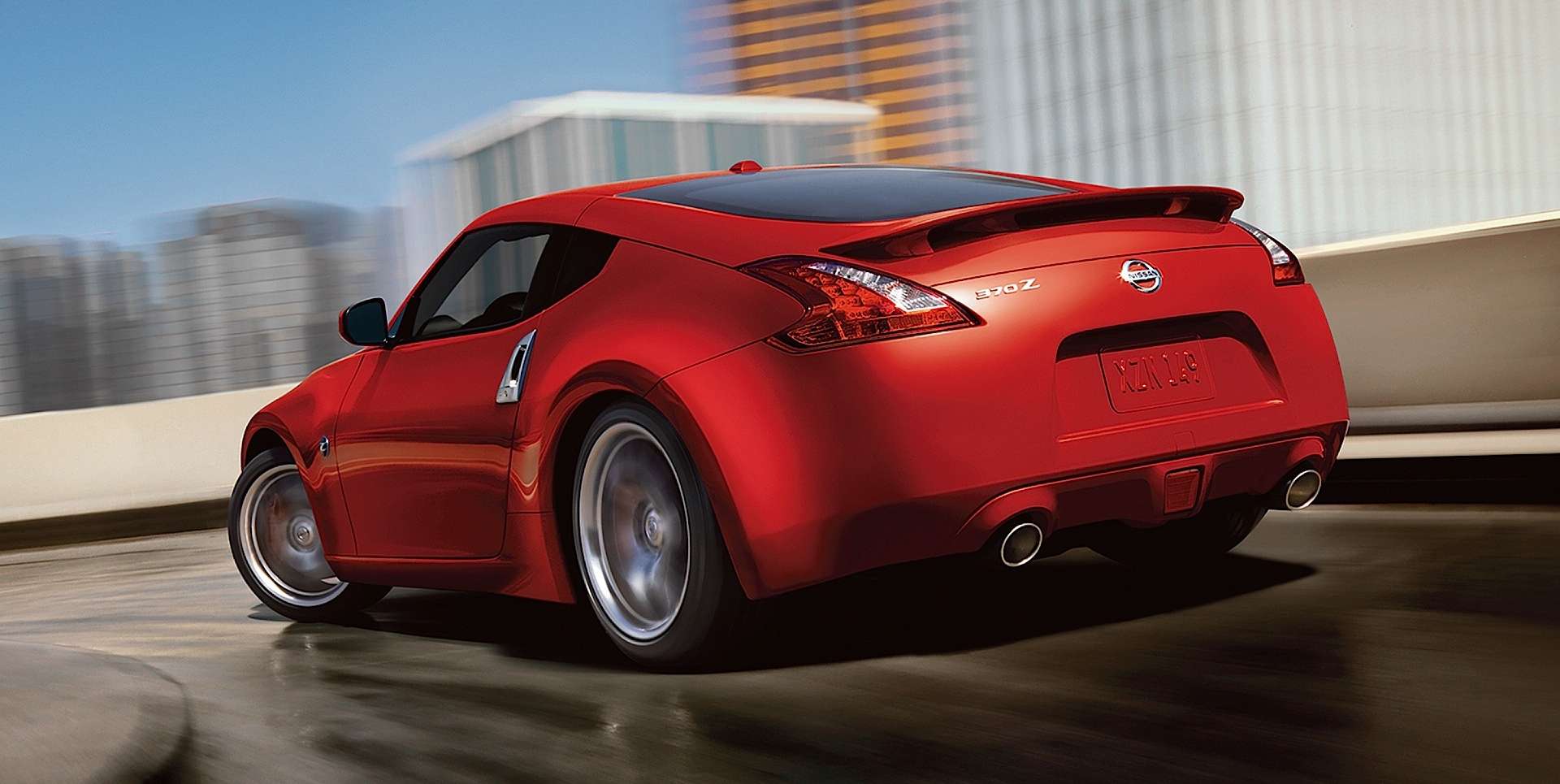
In performance testing, a 370Z coupe with a manual transmission accelerated from zero to 60 mph in 5.5 seconds -- the slightly heavier Roadster posted an identical time. That's about as quick as the six-cylinder Camaro and about a second quicker than a Miata or BR-Z, but a second or so slower than a V8-powered Camaro or Mustang.
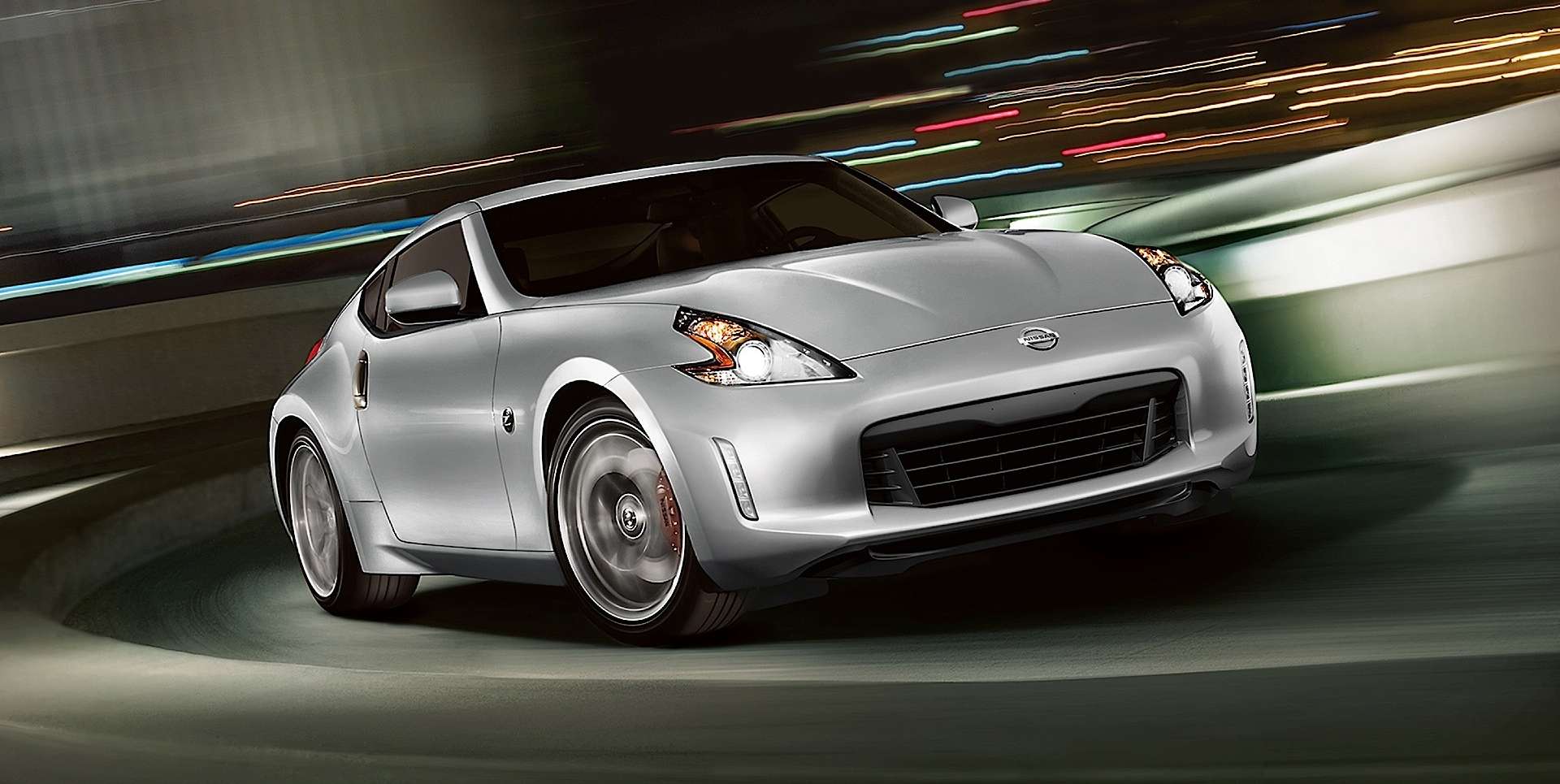
EPA fuel economy for the 370Z coupe stands at 22 mpg combined (19 mpg city/26 mpg highway) with the automatic; the manual checks in at 21 mpg combined (18 city/26 highway). The Roadster's fuel economy is slightly worse at 21 mpg combined (18 city/25 highway) with the automatic and 20 mpg combined (17 city/24 highway) with the manual transmission.
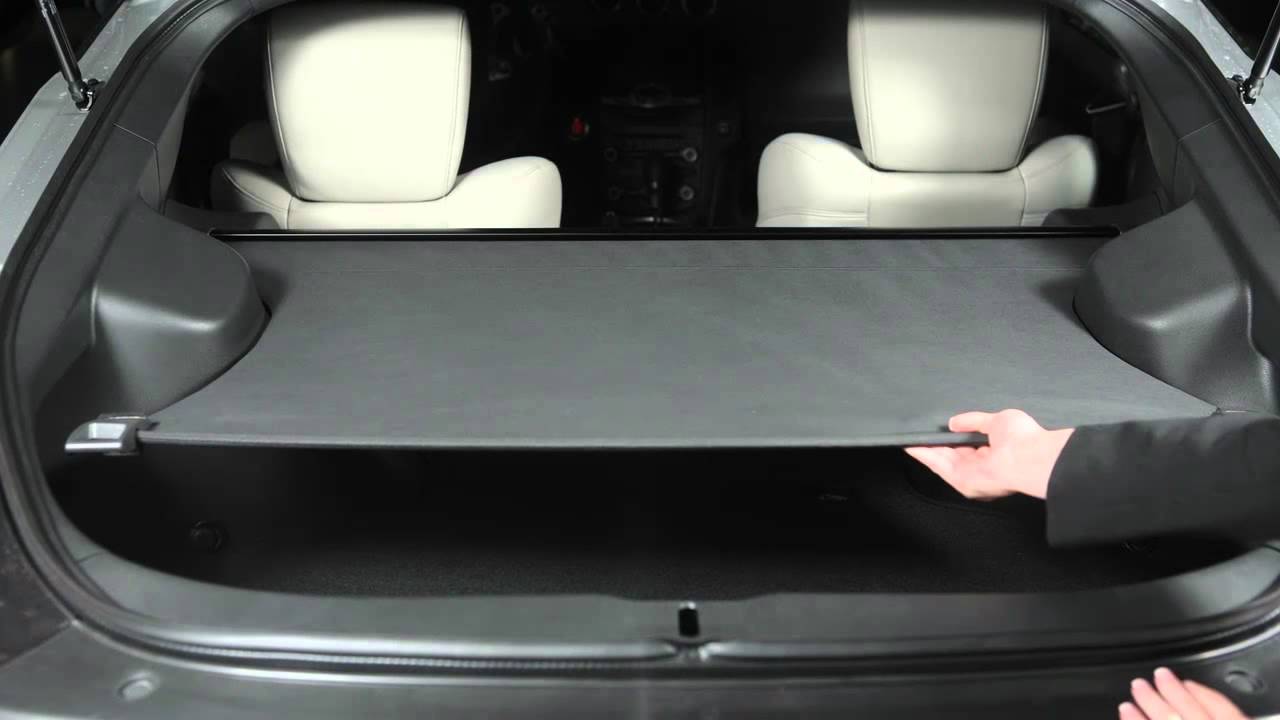
The 370Z Nismo models use a specially tuned version of the V6 that generates 350 hp and 276 lb-ft of torque. The six-speed manual transmission with SynchroRev Match is standard, with the seven-speed automatic available as an option. We've tested a couple of manual-transmission Nismo models, the most recent a Nismo Tech. Zero to 60 mph took 5.2 seconds, a disappointing performance given the exclusive engine tune and the premium price. The EPA has not separately evaluated the Nismo's fuel economy, but on ' highway-biased evaluation loop, we managed to earn 24 mpg.

The 370Z isn't the kind of sports car that you'll see in many rental-car fleets. It's meant for driving enthusiasts who will value ultra-responsive steering and a body that stays flat even in high-speed corners. When a suspension is tuned for maximum performance, though, it can lose some comfort in the process and the Z definitely falls victim to that problem. It's livable for daily commuting, but rough roads or long highway road trips will be problematic. The raucous road noise that fills the cabin is another drawback. Granted, we haven't tested a model with the optional noise cancellation system yet, and that could help.

While the Z can boast V8-adjacent acceleration numbers, revving it to its redline isn't the reward it is in other sports cars. In normal driving, you'll often find yourself shifting up to the next gear to avoid the coarse noises that come with high-rpm engine speeds and the vibrations that come through the pedals and shifter. Despite all this, the 370Z is still invigorating to drive, especially at speed. In particular, the SynchroRev Match mode for the manual transmission is a delight, as it'll make you feel like a professional racer with every near-perfect rev-matched downshift.
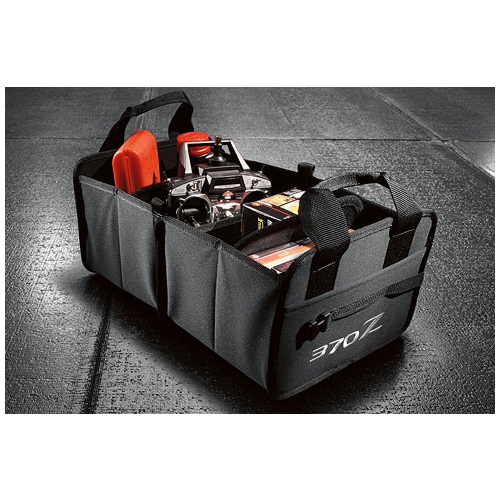
The Nissan 370Z shares a lot of its underpinnings with several Infiniti models, which explains its surprisingly comfortable and livable demeanor around town. Oh, you'll notice road distortions and freeway expansion joints, but the ride isn't overly harsh for a 2-seat sports car. Yet, take that exact same car to a twisting road, and you'd be hard-pressed to imagine that it's related to the Infiniti QX50 in any way. On a mountain pass, you'll discover a car with flat cornering, excellent steering and powerful brakes. If you've opted for a manual transmission, the SynchroRev Match does just what it says: matching downshifts and making it easy to shift this sports car like a pro. While the V6 offers excellent mid- and high-rev power, it could use more low-end torque. Also, be forewarned that the Nismo versions eschew any sort of road manners for that last nth of handling.

SYNCHROREV MATCH The Nissan Z was one of the first cars to automatically match revs as you downshift, and while it's not unique anymore, it's still a godsend for drivers who haven't quite mastered the intricacies of heel-toe downshifting. Don't worry, old-schoolers: You can turn it off. CHASSIS TUNING It should come as no surprise that the 2017 370Z offers up excellent handling. It is a 2-seat sports car, after all, and that's its job. But the unexpected benefit of a comfortable ride when you just want to cruise to the beach is equally welcome.

The 2017 Nissan 370Z is not luxury-car quiet, but it is much more livable on a day-to-day basis than you might expect for a relatively affordable 2-seat sports car. Active noise cancellation added last year helps quiet the interior without adding heavy sound-deadening materials, and it fits in nicely with the upscale materials and quality feel of the 370Z. The three gauges in the center of the dash hearken back to the original Z from the 1970s, and the Z offers good ergonomics, comfortable seats, decent cargo space, and touches like a gauge cluster that adjusts with the steering column.
From some angles, the Nissan 370Z looks a little stubby, thanks to its low profile, short wheelbase and wide stance. But overall this is a sharp, smart and right-styled car. It's also small, and the wide stance and flared wheels serve to exaggerate the smallness. But it all works in its own aggressive way, and when you add the available Sport Package you get front and rear spoilers and bigger tires and wheels. The higher-performance Nismo version includes aerodynamic aids like a larger front spoiler and rear wing. The Roadster's power-operated top quickly stows underneath a hard cover for open-air motoring.
The 2017 Nissan 370Z Coupe is offered in, Sport, Sport Tech, Touring, Nismo and Nismo Tech models; 370Z Roadsters offer base, Touring and Touring Sport. Base Coupe and Roadster models come with automatic climate control, Bluetooth, steering-wheel audio and cruise controls, keyless entry and start, xenon headlights and a 4-speaker audio system with auxiliary input. Touring models add luxury, such as power-adjustable heated seats, navigation, leather and suede inside; Sport models double down with bigger wheels and a rear spoiler. Nismo models get more power and stiffer suspension. Safety features include stability control, active head restraints and six airbags.
If you want options on your Nissan 370, you're choosing a different model, not checking an order sheet. The only stand-alone option is a 7-speed automatic transmission. Otherwise there are various factory- and dealer-installed accessories available as stand-alone options. An Aerodynamic Package adds a front wind deflector and rear spoiler.
In February 2012, Nissan announced a refresh for its 370Z coupe which, although insignificant from a cosmetic point of view, does give the model more appeal.
Known by many names, this major Asian conglomerate has been making cars since 1914. Today, Nissan is the third largest automaker in Japan. The Nissan Motor Company took over the Datsun company in 1933 and in 1934 it would take on the name we all know today.
The first Datsun passenger car came off the assembly line in 1935 and pretty soon Nissan started exporting to Australia. In 1937 the Datsun Type 15 becomes the first mass-produced vehicle in Japan, which also comes in mini-pickup and delivery van form.
Ever expanding the production, Nissan decides to expand into the United States. This move from 1958 was made due to the American influence Nissan had thanks to its designer, William R. Gorham. The models exported to the US were 1200 Sedans with a 48 hp engine, a compact pickup with 37 hp which later became a top seller during the 50s.
By the time the 60s rolled in Nissan had already made a name for itself on both sides of the Pacific. Now, the company moves into another part of the market, starting to sell sport cars. At first, it would be the SPL 210, a narrow, high roadster had a folding soft top and a 48hp engine, soon upgraded to a 85hp version.
Catering for the American market, Nissan introduces the Bluebird, with synchronized 3-speed transmission in 1962. In the off-road sector, the Patrol is debuted, with a generous amount of horsepower, that was marketed as being able "to climb trees". In 1967 the 2000 Roadster is let loose upon the unsuspecting public and onto the racing world which it takes by storm.
The sporty line is continued in the 70s with the "Z" line, one still continued today. The 1970 240Z becomes the best selling sports car in the world by offering quality and comfort at an affordable price. Sales in America start taking off until eventually, in 1975, Datsun becomes the number 1 importer in the States.
Nissan starts expanding during the 80s in order to keep up with demand and opens up new factories. And just when everyone thought that Nissan couldn't get any bigger, along comes a whole new brand of Nissan, one aimed at a more luxurious segment of the market, Infiniti. In 1989, as the Infiniti project getting off the ground, parent company Nissan was celebrating its millionth car built in the US.
As new plants get built throughout the 90s, new models are added to the line up to corner the market. The Altima sedan and the Sentra become front-runners as the best sold models in the Nissan line-up. Next, in 1999, it was time for the European market, Nissan signs an agreement with French manufacturer Renault to use each other's expertise and strengths.
In 2002, the Z concept is resurrected with the 350Z, a sporty car that quickly wins over car enthusiasts but specialists as well. The ewly-formed SUV market will also be represented in the Nissan line-up with the Murano. Now, the boys over at Nissan seem to have a real hard point to make as they've released the GTR, a super-sporty car, the crowning jewel of Nissan motoring and engineering.
Source: https://www.mycarspecs.com/car/2017-nissan-370z-base-nismo








Tidak ada komentar:
Posting Komentar